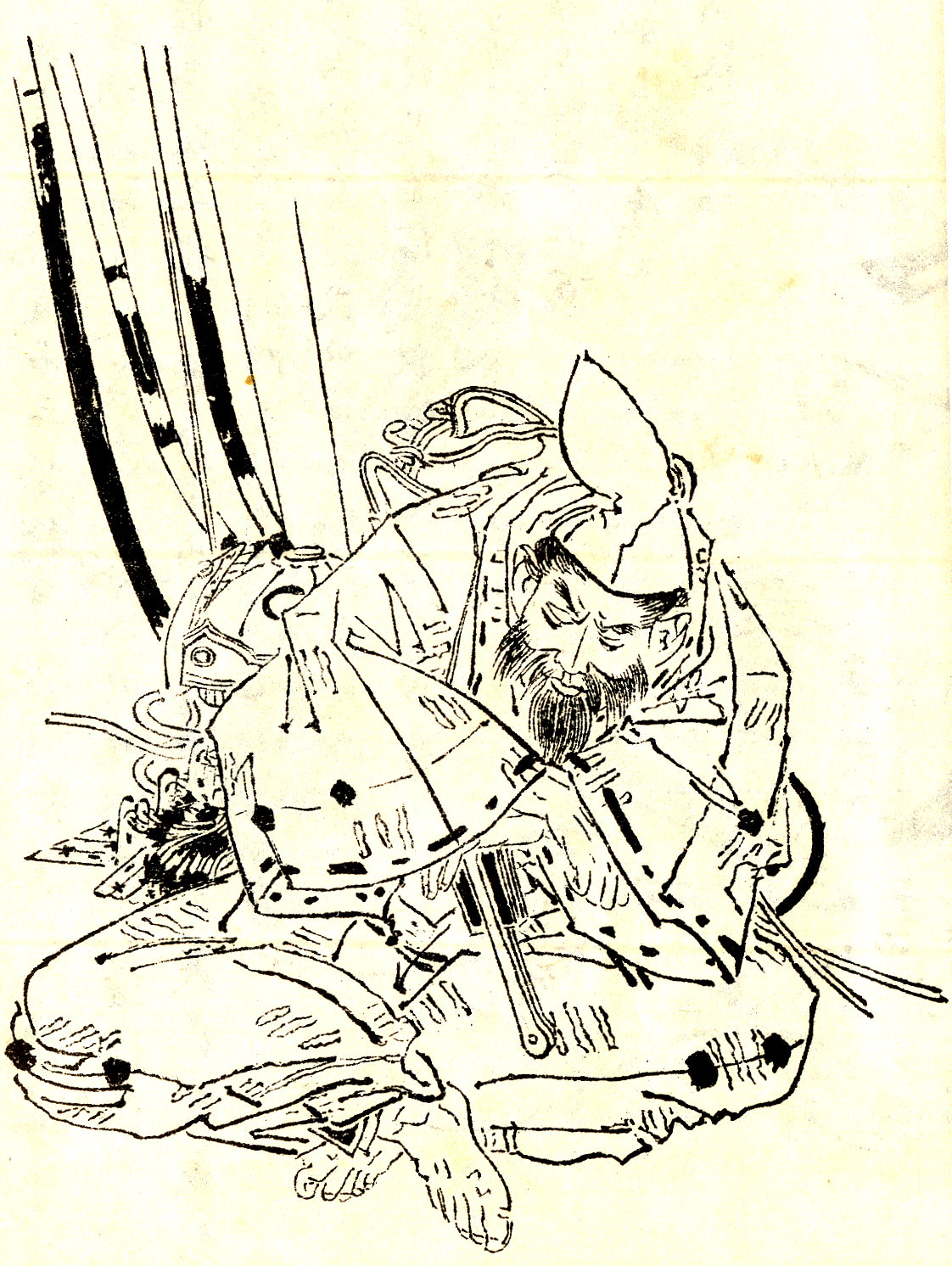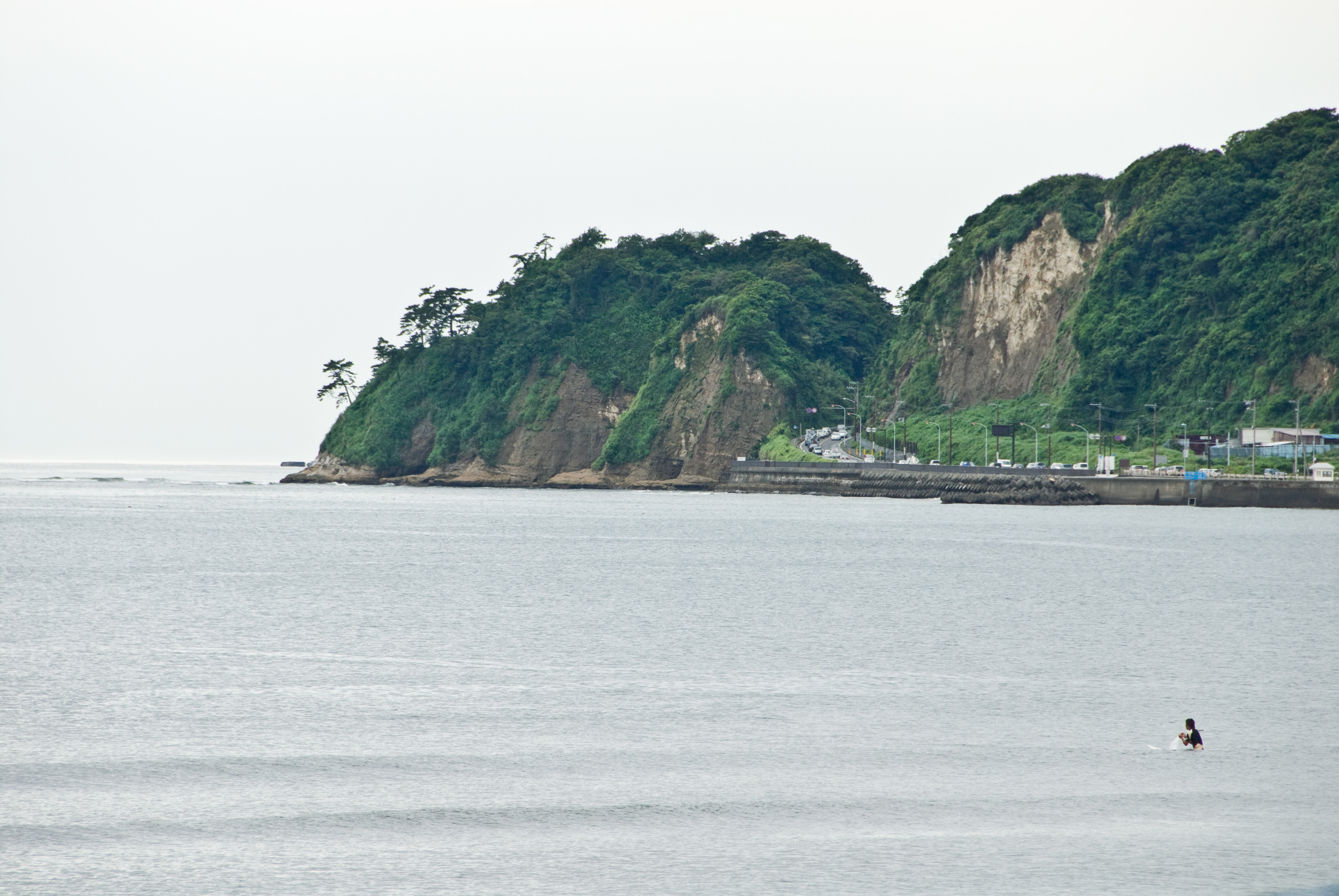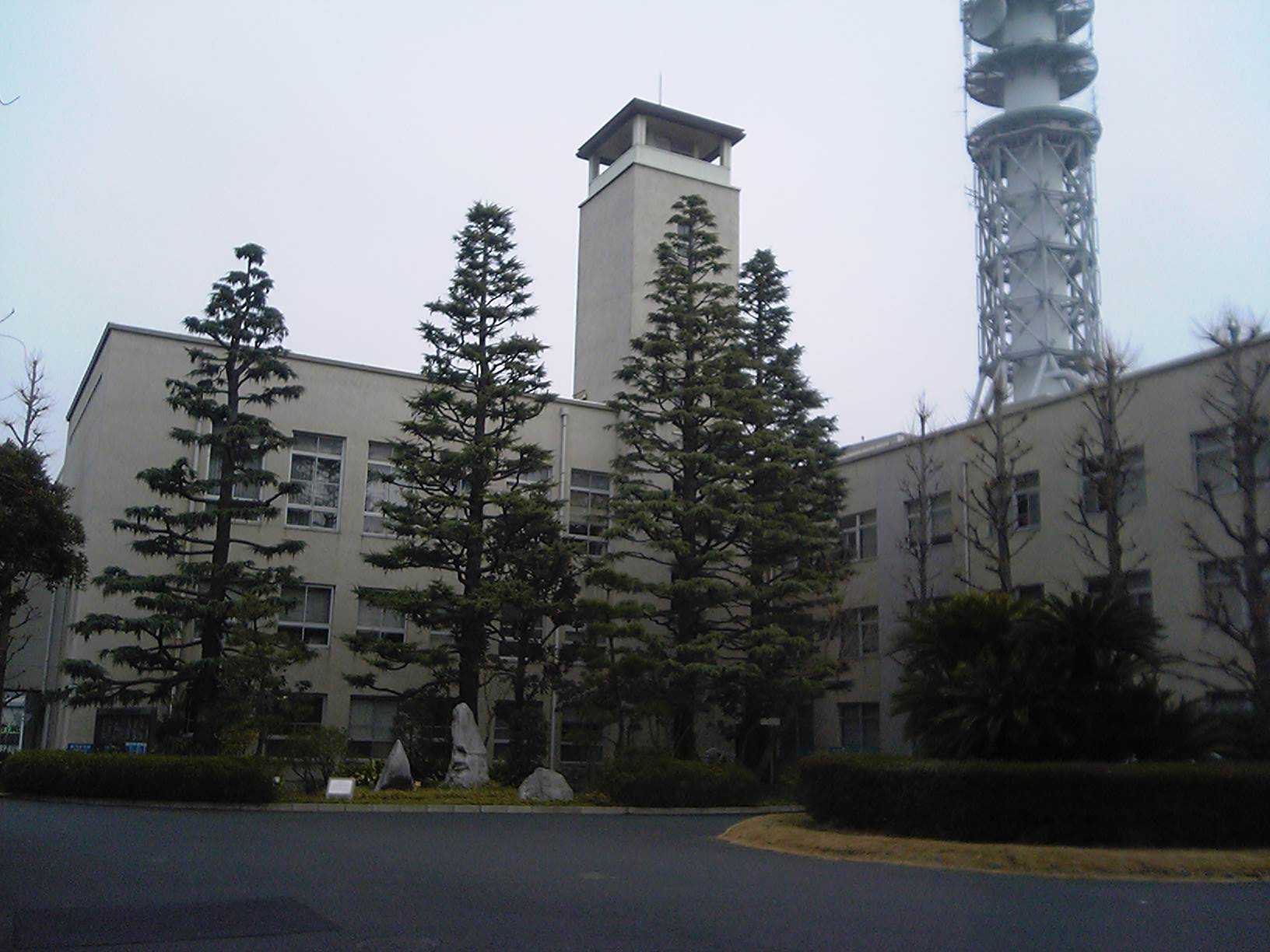|
Kamakura's Seven Passes
The city of Kamakura, Kanagawa in Japan, is closed off on three sides by very steep hills and on the fourth by the sea: before the construction of several modern tunnels and roads, the so-called Seven Entrances (''Nana-guchi''), or (all artificial) were its main links to the rest of the world.Kamakura Shōkō Kaigijo (2008: 54-56) The city was therefore a natural fortress and, according to the Azuma Kagami, it was chosen by Minamoto no Yoritomo as his base specifically for this reason. Historical Landmark - Asaina Pass (June 5, 1969) In 1240 the Kamakura shogunate ordered works to improve communications between the city and the important center of Mutsuura, and construction was started in April of the following year. The Shikken Hōjō Yasutoki himself directed the work and carried stones and dirt with his horse to speed it up. Mutsuura was then a center of salt production and an important port for the distribution of goods not only to and from Kantō centers like Awa Province ... [...More Info...] [...Related Items...] OR: [Wikipedia] [Google] [Baidu] |
Wada Yoshimori
was an early Kamakura period military commander. A ''gokenin'' (retainer) of the Kamakura shogunate, he was the first director (''bettō'') of the Samurai-dokoro. Life Wada Yoshimori was born as the son of Miura Yoshiaki and grandson of Sugimoto Yoshimune, making him a descendant of the Taira clan.Kusumoto (2002:68) Yoshimori "was attached to Noriyori as his ''saburai daisho'' (general of soldiers)." He fought in the battle of Ichi-no-Tani (1184). He also fought in the Battle of Dan-no-ura, where he engaged Chikakiyo of Iyo in an archery duel. Later, he participated in the campaign against Kiso Yoshinaka (1184) and Fujiwara Yasuhira (1189). Among his sons were Wada Yoshinao, Asahina Yoshihide, and Wada Yoshishige. He also had a nephew, Wada Tanenaga. Like many others, he and his family became victims of the struggle for power that followed the death of the first Kamakura shōgun Minamoto no Yoritomo. Tension had been growing between the Hōjō Regents and Wada, and ope ... [...More Info...] [...Related Items...] OR: [Wikipedia] [Google] [Baidu] |
Inamuragasaki
is a cape at the western end of Yuigahama (Beach) in Kamakura, Kanagawa Prefecture, Japan. The cape divides Yuigahama from Shichirigahama (Beach) and Enoshima. Its name seems to stem from its shape, similar to a stack of rice at harvest time (an ). At its foot on the Shichirigahama side there is a park, the . History Because the ancient Tōkaidō highway passed along the sea south of this cape before heading to the Miura Peninsula, before the opening of the Gokuraku Pass Inamuragasaki was the traditional point of entry to Kamakura at the time of the Kamakura shogunate. Now crossed by a road (see photo), it used to be impassable by land and was therefore one of the natural defenses that made Kamakura an impregnable fortress. For this reason, it appears often in the historical record. It is first mentioned in the Genpei Jōsuiki because the Miura clan in 1180 crossed it twice to go rescue Minamoto no Yoritomo at the battle of Ishibashiyama. The troops didn't arrive in time, Yor ... [...More Info...] [...Related Items...] OR: [Wikipedia] [Google] [Baidu] |
Gokuraku-ji (Kamakura)
is a Buddhist temple of the Shingon sect located in Kamakura, Kanagawa Prefecture, Japan. It was founded in 1259 by Ninshō (1217-1303) and has been restored and rebuilt many times since then. See also * For an explanation of terms concerning Japanese Buddhism, Japanese Buddhist art, and Japanese Buddhist temple architecture, see the Glossary of Japanese Buddhism This is the glossary of Japanese Buddhism, including major terms the casual (or brand-new) reader might find useful in understanding articles on the subject. Words followed by an asterisk (*) are illustrated by an image in one of the photo galle .... References and external links *Frederic, Louis (2002). "Japan Encyclopedia." Cambridge, Massachusetts: Harvard University Press. 1259 establishments in Asia Buddhist temples in Kamakura, Kanagawa 1250s establishments in Japan Shingon Ritsu temples {{Japan-religious-struct-stub ... [...More Info...] [...Related Items...] OR: [Wikipedia] [Google] [Baidu] |
Historic Sites Of Japan
is a collective term used by the Japanese government's Law for the Protection of Cultural Properties to denote Cultural Properties of JapanIn this article, capitals indicate an official designation as opposed to a simple definition, e.g "Cultural Properties" as opposed to "cultural properties". as historic locations such as shell mounds, ancient tombs, sites of palaces, sites of forts or castles, monumental dwelling houses and other sites of high historical or scientific value; gardens, bridges, gorges, mountains, and other places of great scenic beauty; and natural features such as animals, plants, and geological or mineral formations of high scientific value. Designated monuments of Japan The government ''designates'' (as opposed to '' registers'') "significant" items of this kind as Cultural Properties (文化財 ''bunkazai'') and classifies them in one of three categories: * * , * . Items of particularly high significance may receive a higher classification as: * * * ... [...More Info...] [...Related Items...] OR: [Wikipedia] [Google] [Baidu] |
Meiji Era
The is an era of Japanese history that extended from October 23, 1868 to July 30, 1912. The Meiji era was the first half of the Empire of Japan, when the Japanese people moved from being an isolated feudal society at risk of colonization by Western powers to the new paradigm of a modern, industrialized nation state and emergent great power, influenced by Western scientific, technological, philosophical, political, legal, and aesthetic ideas. As a result of such wholesale adoption of radically different ideas, the changes to Japan were profound, and affected its social structure, internal politics, economy, military, and foreign relations. The period corresponded to the reign of Emperor Meiji. It was preceded by the Keiō era and was succeeded by the Taishō era, upon the accession of Emperor Taishō. The rapid modernization during the Meiji era was not without its opponents, as the rapid changes to society caused many disaffected traditionalists from the former samurai cl ... [...More Info...] [...Related Items...] OR: [Wikipedia] [Google] [Baidu] |
Shinpen Kamakurashi
The is an Edo period compendium of topographic, geographic and demographic data concerning the city of Kamakura, Kanagawa Prefecture, Japan, and its vicinities. Consisting of eight volumesTakahashi (2005:20) and commissioned in 1685 by Tokugawa Mitsukuni to three vassals, it contains for example information about "Kamakura's Seven Entrances", "Kamakura's Ten Bridges" and "Kamakura's Ten Wells".Kusumoto (2002:67) It includes illustrations, maps, and information about temples, ruins and place names etymologies not only about Kamakura, but also about Enoshima, Shichirigahama, Hayama and Kanazawa.Shirai (1976:167) The book created and popularized many of these "numbered" names, which were picked up by many subsequent tourist guides and became part of Kamakura's image. Each volume contains a day's worth of walking and is a real and effective guide to sightseeing. This makes the book a precious source of information to historians. It is also the source of at least one Kamakura canard: it ... [...More Info...] [...Related Items...] OR: [Wikipedia] [Google] [Baidu] |
Fujisawa, Kanagawa
is a city in Kanagawa Prefecture, Japan. , the city had an estimated population of 439,728 and a population density of 6300 persons per km². The total area of the city is . Geography Fujisawa is in the central part of Kanagawa Prefecture. It faces Sagami Bay of the Pacific Ocean. The northern part of the city is on the Sagamino plateau while the southern part is on the Shonan Dunes. Fujisawa has three major topographical features: the island of Enoshima to the south connected to the Katase shoreline area by a road bridge, and two rivers, the Hikiji and the Sakai, which run north-south. The Hikiji can be traced from an area designated as a nature reserve park in the city of Yamato and flows directly along the boundary of the joint US Navy and Japan Maritime Self-Defense Force Atsugi Naval Air Base and the United States Army Camp Zama. The Sakai runs directly from the mountains between Machida and Hachiōji, and for quite some distance forms the border between the Tokyo Metr ... [...More Info...] [...Related Items...] OR: [Wikipedia] [Google] [Baidu] |
Stele
A stele ( ),Anglicized plural steles ( ); Greek plural stelai ( ), from Greek , ''stēlē''. The Greek plural is written , ''stēlai'', but this is only rarely encountered in English. or occasionally stela (plural ''stelas'' or ''stelæ''), when derived from Latin, is a stone or wooden slab, generally taller than it is wide, erected in the ancient world as a monument. The surface of the stele often has text, ornamentation, or both. These may be inscribed, carved in relief, or painted. Stelae were created for many reasons. Grave stelae were used for funerary or commemorative purposes. Stelae as slabs of stone would also be used as ancient Greek and Roman government notices or as boundary markers to mark borders or property lines. Stelae were occasionally erected as memorials to battles. For example, along with other memorials, there are more than half-a-dozen steles erected on the battlefield of Waterloo at the locations of notable actions by participants in battle. A traditio ... [...More Info...] [...Related Items...] OR: [Wikipedia] [Google] [Baidu] |
Kumano Jinja (Asaina Pass)
A is a type of Shinto shrine which enshrines the three Kumano mountains: Kumano Hongū Taisha, Hongū, Shingū, and Nachi [].Encyclopedia of ShintoKumano Shinkō accessed on October 6, 2008 There are more than 3,000 Kumano shrines in Japan, and each has received its kami from another Kumano shrine through a process of propagation called or . The point of origin of the Kumano cult is the Kumano Sanzan shrine complex in Wakayama Prefecture, which comprises (Shingū, Wakayama), Kumano Hongū Taisha (Tanabe, Wakayama) and Kumano Nachi Taisha (Nachikatsuura, Wakayama Prefecture). Kumano Sanzan The three Kumano Sanzan shrines are the ''Sōhonsha'' ("head shrines") of all Kumano shrines and lie between 20 and 40 km from each other. They are connected to each other by the pilgrimage route known as . The great Kumano Sanzan complex also includes two Buddhist temples, Seiganto-ji and Fudarakusan-ji. The religious significance of the Kumano region goes back to prehistoric times and ... [...More Info...] [...Related Items...] OR: [Wikipedia] [Google] [Baidu] |
Shimōsa Province
was a province of Japan in the area modern Chiba Prefecture, and Ibaraki Prefecture. Nussbaum, Louis-Frédéric. (2005). "''Shimōsa''" in . It lies to the north of the Bōsō Peninsula (房総半島), whose name takes its first ''kanji'' from the name of Awa Province and its second from Kazusa and Shimōsa Provinces. Its abbreviated form name was or . Shimōsa is classified as one of the provinces of the Tōkaidō. It was bordered by Kazusa Province to the south, Musashi and Kōzuke Provinces to the west, and Hitachi and Shimotsuke Provinces to the north. Under the ''Engishiki'' classification system, Shimōsa was ranked as a "great country" (大国) and a far country (遠国). History Shimōsa was originally part of a larger territory known as , which was divided into "upper" and "lower" portions (i.e. Kazusa and Shimōsa) during the reign of Emperor Kōtoku (645–654). It was well-known to the Imperial Court in Nara period Japan for its fertile lands, and is mentioned in ... [...More Info...] [...Related Items...] OR: [Wikipedia] [Google] [Baidu] |







